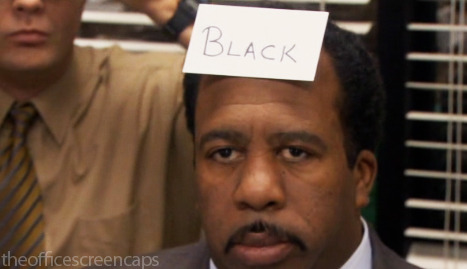005. Handle With Care 2.0
Hey y’all!
I’m here to share something I wrote a few years ago after reading Party by Tom Leveen. I posted a review on my old blog Taking Friday about the novel. It was okay, for the most part but I found the portrayal of the PoC characters a little….for lack of a better term, problematic. It prompted me to write a blog post entitled “Handle With Care.” I’m sharing it again with a few added thoughts because it still seems to be an issue. The following is simply my opinion which is based on a few observations. I am in no way speaking on behalf of an entire group of people. Only myself.
Earlier this week, Leonicka posed a question on Twitter of would you rather misrepresentation or no representation in regards to media. I did some thinking on the matter myself. No representation means I’m invisible yet misrepresentation means having to fight an uphill battle to dismantle negative stereotypes. It’s a no-win situation. It’s funny that the question was presented while I was thinking about reposting this blog post because my thoughts from that time seem to be 100% against misrepresentation.
In my original review of the book (which is now lost to the ages), I stated that it seemed like characters of color in some YA novels are there for the sole purpose of allowing the other characters to be able to say “Oh, it’s cool bro. I have a black/Asian/Hispanic/Middle Eastern/etc. friend.” It remains that at times it seems as though PoC characters are props and not people. Sometimes, it seems like PoC characters are there as a half-hearted attempt at diversity. What good is it to have PoC character if it’s just a flat mash-up of terrible stereotypes? Using diversity to further negative portrayals of underrepresented groups just ain’t the business and does more harm than good. A part of writing is challenging yourself to step outside your comfort zone and write about things that you may not have experienced. If you aren’t a person of color and have imagined this character that happens to be one, research is important. You don’t want to be one of those authors who rely heavily on stereotypes to create a character. The results of that method are– if not totally offensive, then definitely bordering on it. Nothing’s more cringe-inducing than reading something that feels like the author has browsed through Urban Dictionary to find the latest slang for more “ethnic” appeal. Thus giving the character some weird, unrealistic way of speaking. Or going to great lengths find a simile to describe a character’s appearance and ending up with something like “black as coal.”
No, sis. That’s not the way to do it.
I’m not saying that slang shouldn’t be used. Slang is totes fine and can help develop a character. Same with dialects—people speak differently—but, you don’t want to venture off into offensive territory. Nothing makes me put down a book faster than having difficulty understanding what a character is saying or feeling belittled by the way author chooses to have the character express themselves (given the context of the story, of course).
I believe writers should approach using characters of color with this in mind: THEY ARE PEOPLE. NOT ALIENS. It’s troubling to find that people can create an alien species with complexities that leave the reader wondering if they could exist yet will write an African-American character who’s sassy or an Asian character who is good at math. Are we that difficult to relate to? We’re people with varying interests. There are things we like and things we dislike. We have hobbies, unrequited crushes, family dysfunction, friend drama, etc. just like everyone else. We’re people. We breathe. We cry. We love. We hate. Just like everyone else.
Finding the humanity in your characters should be the starting point. Flesh out their likes, dislikes, their history just as you would any character then go on from there. View them as a human being who just so happens to be African American/Hispanic/Asian/Middle Eastern etc. Sometimes their cultural/ethnic background may impact the story you’re trying to tell. Sometimes it may not. That’s okay.
Not every African American youth has to struggle with poverty and the decision whether or not to join a gang. Not every Asian teen has an extremely strict upbringing. Not every Hispanic/Latino young person has to struggle with maintaining cultural identity while trying to assimilate into the American way of life. Yes, these are building blocks for powerful stories. Yes, this is a way of life for many people. However, these scenarios should not have to be the back story for every minority character. Yes, their cultural/ethnic background will impact the way they interact with other characters and their world but they shouldn’t be the literary equivalent of stick figures with “Hi, I’m [INSERT MINORITY GROUP]” taped to their foreheads. In the long run, it doesn’t make the characters seem well-developed or thought out.
These are just a few of thoughts. Like I’ve said, I’m not speaking on behalf of anyone other than myself. I swear I’m not going to spend all my time complaining about the lack of diversity in young adult literature but it’s something that’s near and dear to me.
